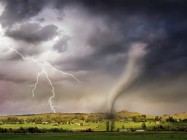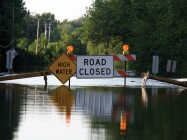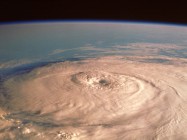Much of the country enjoys the change of seasons, but severe winter weather, including subzero temperatures, wind chills and significant snow fall can cause expensive property damage, and even result in the loss of life. Keep in mind these important safety tips as you prepare for and deal with harsh winter weather.
Winter Weather Preparation & Recovery
- Winter Weather Preparation
- Winter Weather Recovery
- Winter Weather Terminology
Winter Weather Preparation
Take steps to make sure your home is properly insulated and sealed:
- Insulate walls and attics to conserve heat and energy.
- Weather strip doors and windows to protect against drafting air.
- Install storm windows or use plastic sheeting to cover windows.
- Use all-weather caulk to seal around window frames, door frames and other openings on the exterior of your home.
- Stock up on firewood.
- Insulate pipes, especially those near exterior walls of your home.
Other Tips:
- Winterize your vehicle, which includes snow tires or chains, if necessary.
- Keep plenty of extra blankets in your home.
- Ensure that every member of your family has a hat, scarf, gloves or mittens, warm coat and water-resistant boots.
- Create a supply of water (at least one gallon a day per person for three days) in the event pipes freeze.
- Assemble a disaster kit that includes but is not limited to a First Aid kit, battery powered radio and lamps, supply of fresh batteries, drinking water, canned food and non-electric can opener, extra blankets, etc. Click here to view a full listing of suggested emergency items.
- If you live in an area that experiences frequent power outages due to severe winter weather, consider purchasing a generator.
During the winter storm:
- Stay indoors, leaving your home only for emergencies.
- If you must go outside, walk carefully on snowy and icy ground, and wear layers of warm clothing and cover your mouth to protect your lungs.
- Stay tuned to weather broadcasts> to keep abreast of storm details.
- Keep your cellular phone charged.
- If pipes freeze, remove insulation and wrap rags around the pipes to absorb moisture during thawing.
- Do not use a blow torch to thaw frozen pipes; slow thawing works best to prevent pipes from bursting.
- Change your furnace filter
- Keep your vents open and make sure they are not blocked
Winter Weather Recovery
- Take frequent breaks when shoveling to prevent injury or heart attack.
- Equip your car with blankets, a shovel, battery-operated radio and lamp. Inform others of your planned route and take a fully-charged cell phone with you.
- Stay clear of downed power lines.
- Continue to monitor weather forecasts and conditions – do not be lulled by the serenity of the “winter wonderland” outside your home.
Winter Weather Terminology
Wind Chill Index – The calculation of temperature that takes into consideration the effects of wind and temperature on the human body. Describes the average loss of body heat and how the temperature feels. This is not the actual air temperature.
winter storm – Any one of several storm systems that develop during the late fall to early spring and deposit wintry precipitation, such as snow, freezing rain, or ice.
winter storm watch – This is a forecast for severe weather issued well in advance of the actual occurrence. Usually issued 12 to 36 hours prior to a storm’s arrival, you can use this time to prepare your home and family for the approaching storm
winter storm warning – A forecast issued when severe weather has developed, is already occurring and reported, or is detected on radar. Warnings state a particular hazard or imminent danger. Your severe weather plan should be in place when the warning is issued.
blizzard – A severe weather condition characterized by low temperatures, winds 35 mph or greater, and sufficient falling and/or blowing snow in the air to frequently reduce visibility to 1/4 mile or less for a duration of at least three hours. A severe blizzard is characterized by temperatures near or below 10°F, winds exceeding 45 mph, and visibility reduced by snow to near zero.
whiteout – When visibility is near zero due to blizzard conditions or occurs on sunless days when clouds and surface snow seem to blend, erasing the horizon and creating a completely white vista.
Nor’easter – A cyclonic storm occurring off the east coast of North America. These winter weather events are notorious for producing heavy snow, rain, and tremendous waves that crash onto Atlantic beaches, often causing beach erosion and structural damage. Wind gusts associated with these storms can exceed hurricane force in intensity. A nor’easter gets its name from the continuously strong northeasterly winds blowing in from the ocean ahead of the storm and over the coastal areas.
For more safety tips, go to Tips.acehardware.com.
Published: 3/6/2020




